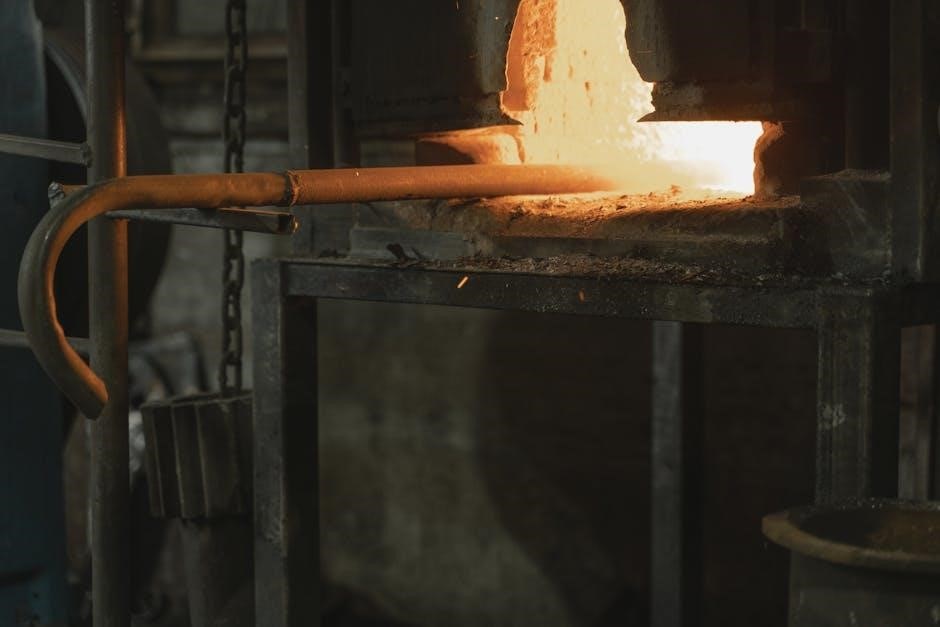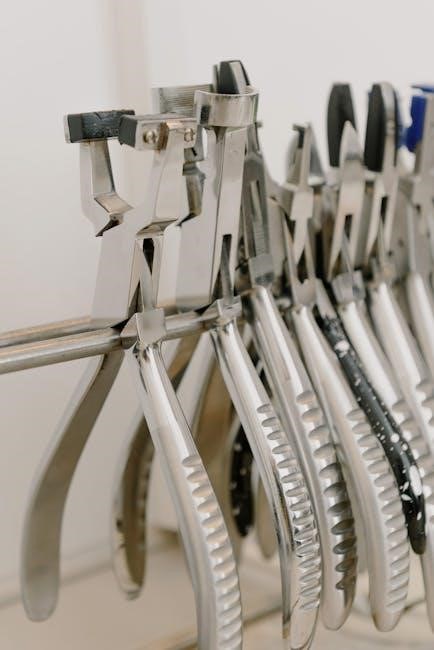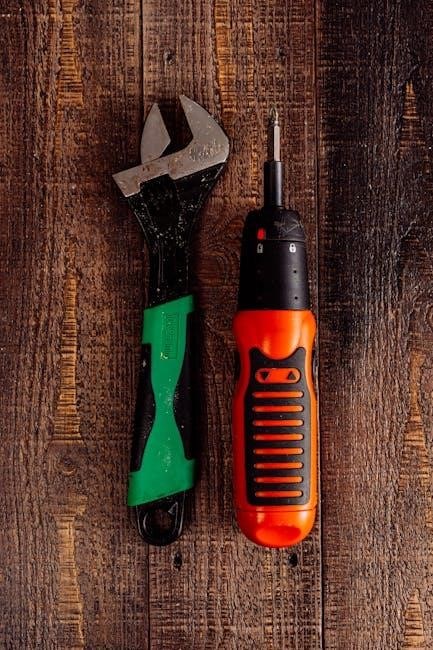Manual steel encompasses a range of steel products and processes relying heavily on manual labor and traditional techniques for shaping and finishing steel materials with precision and skill always required there.
Definition and Overview
Manual steel refers to a range of steel products and processes that rely heavily on manual labor and traditional techniques for shaping, manipulating, and finishing steel materials. This approach to steel production involves a high degree of craftsmanship and attention to detail, as skilled workers use various tools and methods to create customized steel products. The definition of manual steel encompasses a broad spectrum of activities, from cutting and shaping to assembling and finishing, all of which require a strong understanding of steel properties and behavior. An overview of manual steel reveals a complex and nuanced field that combines traditional techniques with modern materials and technologies to produce high-quality steel products. The use of manual steel is often preferred in applications where precision, customization, and aesthetic appeal are paramount, such as in architectural features, decorative elements, and specialty equipment. Overall, manual steel represents a unique and valuable approach to steel production that emphasizes human skill and craftsmanship.
Importance of Manual Steel
The importance of manual steel lies in its ability to provide customized and high-quality steel products that meet specific requirements and applications. Manual steel is often used in situations where automated processes are not feasible or cost-effective, such as in small-scale production, repair work, or specialized fabrication. The use of manual steel also allows for greater control and flexibility in the production process, enabling skilled workers to make adjustments and modifications as needed; Additionally, manual steel can be more cost-effective than automated processes for certain types of production, particularly for low-volume or prototype work. The value of manual steel is further enhanced by the fact that it preserves traditional craftsmanship and techniques, which are essential for maintaining cultural heritage and historical significance. Overall, the importance of manual steel is rooted in its unique combination of flexibility, customization, and craftsmanship, making it an essential component of various industries and applications. Manual steel continues to play a vital role in modern manufacturing.

Manual Pipe Cutting Techniques
Manual pipe cutting techniques include various methods for cutting pipes with precision and skill always required there using different tools and equipment available;
Abrasive Cutting
Abrasive cutting is a manual pipe cutting technique that utilizes an abrasive saw to grind through the pipe material using shear and friction forces. This method is effective for various alloys and can be used to cut pipes of different sizes and shapes. The abrasive saw is typically powered by a handheld device or a machine, and the cutting process involves slowly and carefully grinding through the pipe material. The abrasive cutting technique is often used in situations where other cutting methods are not feasible or practical. It is a relatively slow process, but it provides a high degree of accuracy and control, making it ideal for cutting complex shapes or precise joints. The use of abrasive cutting requires specialized training and equipment, and it is often used in industries where precision and quality are critical. Overall, abrasive cutting is a valuable technique in the manual steel industry, offering a reliable and efficient way to cut pipes and other materials with precision and accuracy.
Hacksawing and Manual Shear Cutting
Hacksawing and manual shear cutting are two common manual pipe cutting techniques used in the steel industry. Hacksawing involves using a hacksaw to cut through the pipe material, while manual shear cutting uses a shear tool to cut the pipe. These techniques are often used for cutting smaller pipes and tubes, and are typically used in situations where precision and control are required. The hacksawing technique is relatively simple and inexpensive, but can be time-consuming and labor-intensive. Manual shear cutting, on the other hand, is a faster and more efficient method, but requires more skill and expertise. Both techniques require specialized training and equipment, and are often used in industries where quality and precision are critical. The use of hacksawing and manual shear cutting allows for a high degree of accuracy and control, making them ideal for cutting complex shapes or precise joints. These techniques are essential in the manual steel industry, providing a reliable and efficient way to cut pipes and other materials with precision and accuracy, and are used in a variety of applications.

Standard Operating Procedure Manual

An SOP manual provides a structured framework outlining processes and best practices for manual steel operations with precision and consistency always required every time.
Importance of SOP Manual
An SOP manual is invaluable for manual steel operations as it provides a structured framework outlining standardized processes and best practices, ensuring consistency and precision in manufacturing. This manual establishes a clear understanding of the production process, from design and fabrication to quality control and shipping. The importance of an SOP manual lies in its ability to ensure that all operations are performed in a consistent and efficient manner, reducing the risk of errors and improving overall productivity. By following the guidelines outlined in the SOP manual, manual steel operations can maintain high standards of quality and safety, while also reducing costs and improving customer satisfaction. The SOP manual serves as a reference guide for employees, providing them with a clear understanding of their roles and responsibilities, and ensuring that all operations are performed in accordance with established procedures and regulations. This helps to ensure that manual steel operations are conducted in a safe and efficient manner.
Components of SOP Manual
The components of an SOP manual for manual steel operations typically include shop drawings approved for fabrication, specifications and procedures for materials, and specifications for fabrication, welding, finishing, delivery, and other work to be performed. The manual also includes work instructions, handling instructions, and reports of step-by-step production and fabrication. These components provide a comprehensive guide for employees to follow, ensuring that all operations are performed in a consistent and efficient manner. The SOP manual also outlines the responsibilities of each employee, ensuring that everyone understands their role in the production process. By including these components, the SOP manual provides a clear and concise guide for manual steel operations, helping to ensure that all products meet the required standards of quality and safety. The manual is an essential tool for maintaining consistency and precision in manufacturing, and is used to train new employees and to review and revise procedures as needed to ensure continuous improvement.

Metal Fabrication Techniques
Metal fabrication techniques include various methods for transforming raw metal into finished products with precision and skill using different tools and equipment always required there every time.
Additive and Subtractive Techniques
Metal fabrication involves various techniques, including additive and subtractive methods. Additive techniques, such as 3D printing, involve adding material to create the desired shape. Subtractive techniques, such as cutting and grinding, involve removing material to achieve the desired form. These techniques can be used separately or in combination to produce complex shapes and structures. The choice of technique depends on the specific requirements of the project, including the type of material, the desired level of precision, and the production volume. Additive techniques are often used for prototyping and small-scale production, while subtractive techniques are commonly used for large-scale production. The use of additive and subtractive techniques in metal fabrication allows for a high degree of flexibility and versatility, enabling the creation of complex and customized products. By combining these techniques, manufacturers can produce a wide range of products, from simple components to complex systems, with high precision and accuracy, using various tools and equipment always required there every time to ensure quality and efficiency.
Steel Fabrication Process
The steel fabrication process involves converting raw steel into desired shapes and structures through various manufacturing techniques. This process allows steel to be customized to meet the needs of different industries, ensuring strength, durability, and precision in end products. The process typically begins with cutting and shaping the steel, followed by assembly and welding. Quality control measures are implemented throughout the process to ensure that the final product meets the required standards. The steel fabrication process requires specialized equipment and skilled labor to produce high-quality products. Different industries have varying requirements for steel fabrication, and manufacturers must be able to adapt to these needs. The process of steel fabrication is critical in producing components for construction, machinery, and other industries. By utilizing various techniques and equipment, manufacturers can produce a wide range of steel products, from simple components to complex structures, with high precision and accuracy, using various tools and equipment always required there every time to ensure quality and efficiency in the production process always.